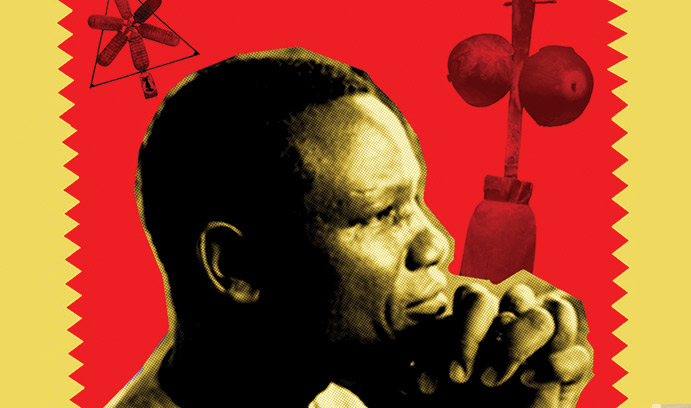An Art History Professor Seeks a West African Audience

Susan Kart studies contemporary West African art and seeks to reach those her research will impact the most—the people of West Africa. Her book on Senegalese sculptor Moustapha Dimé (pictured above) will be published in Senegal this year.
Maximum Impact
Moustapha Dimé, the Senegalese sculptor and subject of Susan Kart's doctoral dissertation and ongoing research, was driven by education and outreach. A leader in Senegalese contemporary art until his death in 1998, Dimé sought to reclaim sculpture as a modern art form for Senegalese artists as part of a new art movement in Senegal known as Récupération. Kart's approach to her study of Dimé reflects the artist's philosophy.
"His whole idea was not to be an artist for himself, for his own glory. Instead he felt he had been given this gift, and the social impact he could have with his art mattered more to Dimé than his own fame or fortune," says Kart, assistant professor of art history and Africana Studies.
Because she conducted her research about Dimé in his native Senegal, Kart decided her first single-author book on the artist belonged with the Senegalese people. A Senegalese publisher, Nouvelles Editions Africaines du Senegal (NEAS), will publish her book in French this year. It will be only the second French-language volume on Dimé in existence; the first is out of print.

"What matters to me is the quality of my work and the appropriateness of my work and the impact of my work. And this book will have a much greater impact in Senegal," Kart says. "It's a political act. In everything I do where Dimé's work is concerned, I sit there and think, 'Would Dimé have approved? Am I following the path that he was following?'"
This approach connects seamlessly with the National Endowment for the Humanities grant Lehigh's Africana Studies program received in 2015. The grant supports the outreach of intellectual material "so it doesn't just stay within the academy and is disseminated and made useful where it matters."
"I do not intend to travel to West Africa, do my research, come home, publish here and never bring that information back to where I did it," Kart explains of her work. She also hopes that publishing her work internationally will further engage Senegalese art historians and cultural thinkers who previously could not access her work and might provide additional perspective to it.
"Then we can start to have a dialogue about what I did not understand, what I got wrong, and what they think," she says. "That has been completely missing in most art historical work—publishing only in the U.S. denies us important dialogue between scholars in multiple places."
Even more broadly, Kart hopes to make information about African art more public at home as well as abroad. Kart recently rewrote the chapters on the arts of Africa for the sixth edition of the Stokstad/Cothren textbook, Art History (forthcoming 2017), published by Pearson. She chose to end the chapter with South African activist/artist Zanele Muholi (photo at left), a self-identified lesbian photographer who documents the lives of lesbian, gay, bisexual, transgender and intersex communities in South Africa and abroad.
The opportunity to take on the African art chapters in Art History, she says, aligned perfectly with her goals: "This is a nationally used textbook in college and advanced high school courses. For any number of students, this is the only book of art they will ever read. It is the only material on African art to which they may ever be exposed. ... Michael Cothren and the editors allowed me to really push the boundaries of what people expect from African art and to do it in a very public way."
This story appears as "Maximum Impact" in the 2017 Lehigh Research Review.
Posted on:




